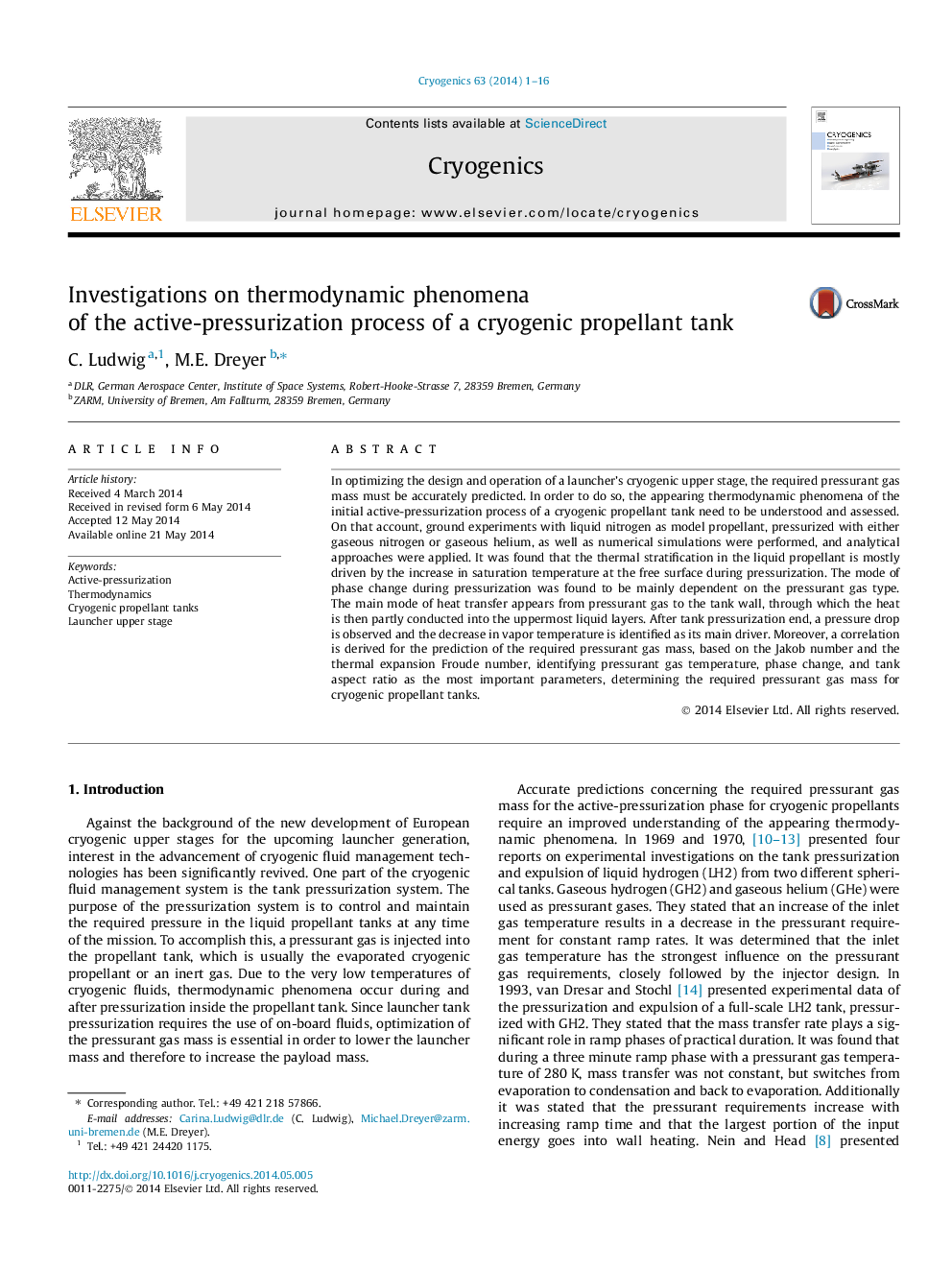| Article ID | Journal | Published Year | Pages | File Type |
|---|---|---|---|---|
| 1507453 | Cryogenics | 2014 | 16 Pages |
•Thermodynamic effects of initial active-pressurization of a cryogenic propellant tank.•Thermal stratification in liquid by increase of saturation temperature at free surface.•Main heat transfer from pressurant gas to wall, conduction into upper liquid layers.•Pressure drop after pressurization mainly resulting from decrease in vapor temperature.•Pressurant gas mass correlation with Jacob number and thermal expansion Froude number.
In optimizing the design and operation of a launcher’s cryogenic upper stage, the required pressurant gas mass must be accurately predicted. In order to do so, the appearing thermodynamic phenomena of the initial active-pressurization process of a cryogenic propellant tank need to be understood and assessed. On that account, ground experiments with liquid nitrogen as model propellant, pressurized with either gaseous nitrogen or gaseous helium, as well as numerical simulations were performed, and analytical approaches were applied. It was found that the thermal stratification in the liquid propellant is mostly driven by the increase in saturation temperature at the free surface during pressurization. The mode of phase change during pressurization was found to be mainly dependent on the pressurant gas type. The main mode of heat transfer appears from pressurant gas to the tank wall, through which the heat is then partly conducted into the uppermost liquid layers. After tank pressurization end, a pressure drop is observed and the decrease in vapor temperature is identified as its main driver. Moreover, a correlation is derived for the prediction of the required pressurant gas mass, based on the Jakob number and the thermal expansion Froude number, identifying pressurant gas temperature, phase change, and tank aspect ratio as the most important parameters, determining the required pressurant gas mass for cryogenic propellant tanks.
